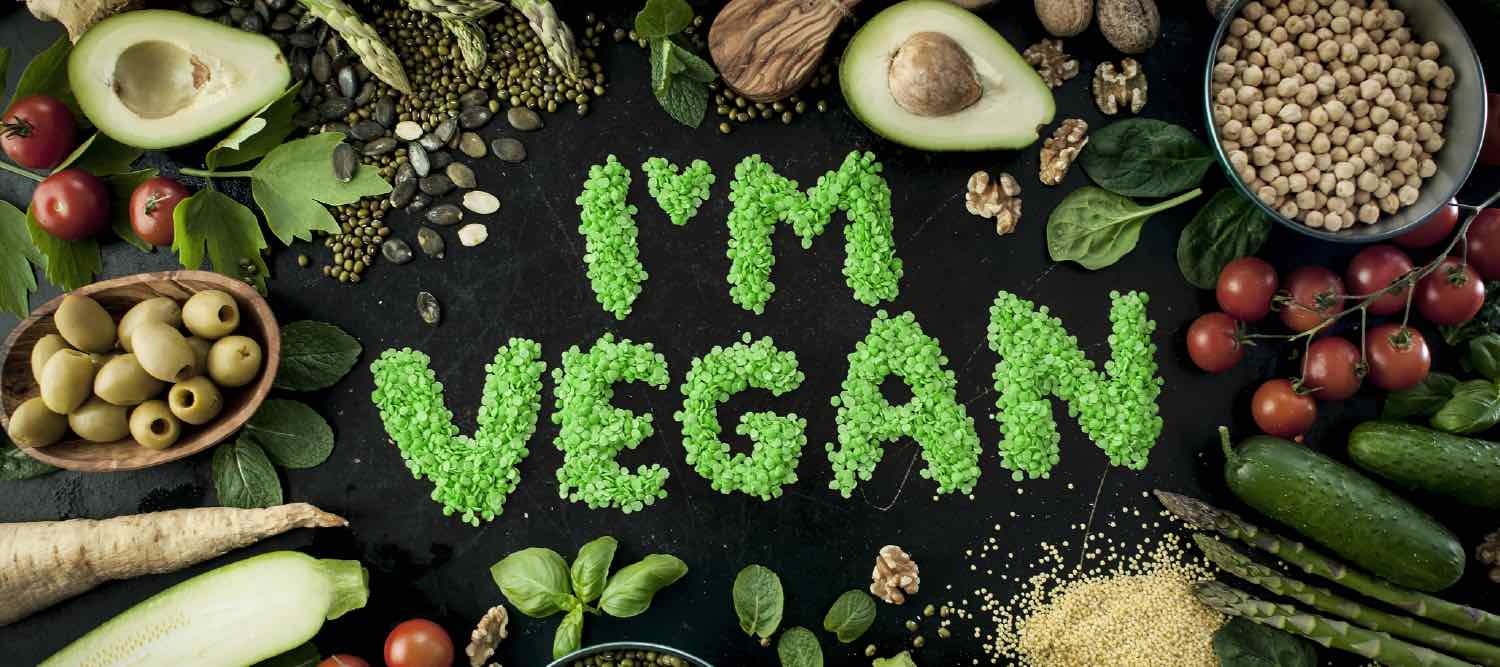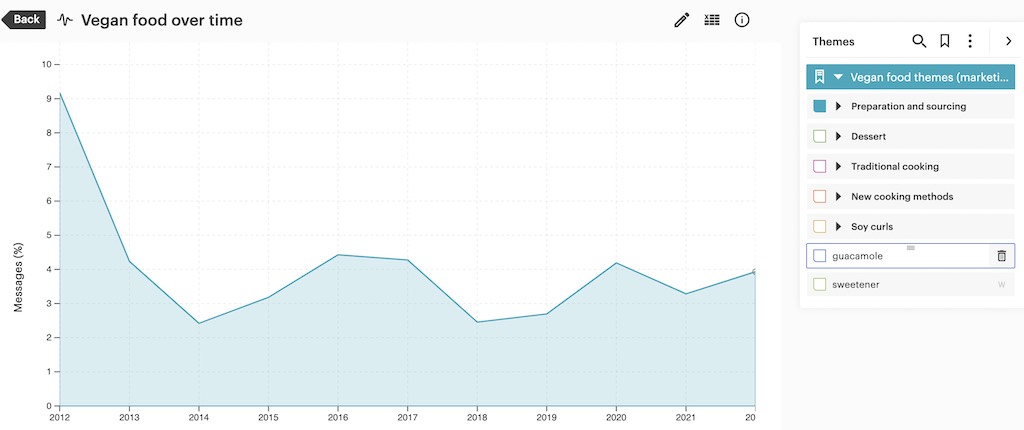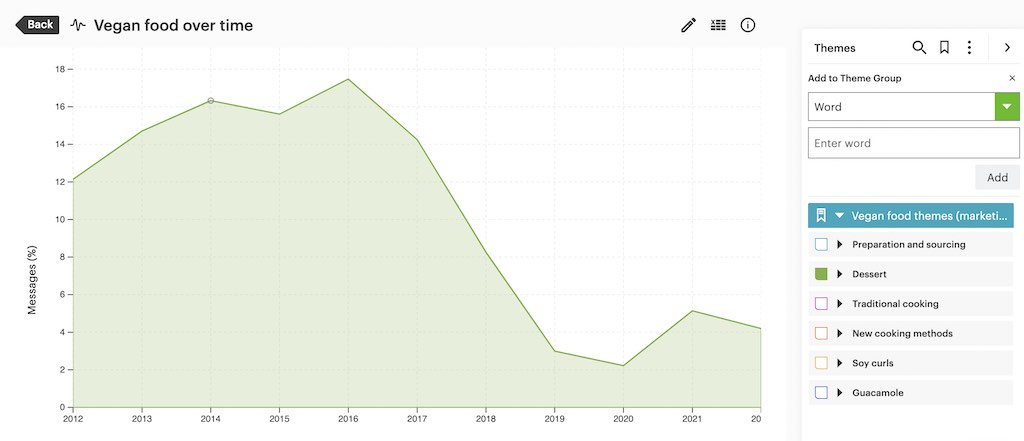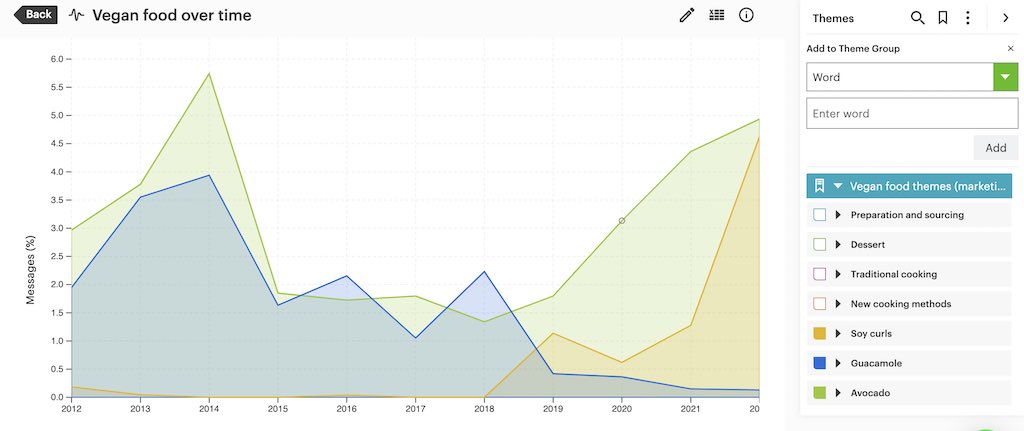Examining market research analytics to find juicy vegan food trends

Vegan food has come a long way over the past decade. As more people take up veganism in the long term, or try a month of Veganuary, whether for health, environmental or other reasons, the choice and availability of vegan food has grown. But greater adoption means a more diverse range of consumers – something which requires brands to conduct market research analytics to uncover how to resonate with these different audiences.
With a Golley Slater study – using insights gleaned through the Relative Insight text analysis platform – finding that consumers are looking to cut back on meat to save money due to the cost-of-living crisis, there could be an even greater market for vegan food vendors. However, with big product launches like meat-free burgers grabbing the headlines, the quieter evolution of vegan food trends remains widely unexplored.
To discover true audience insight into vegan food trends, we gathered online vegan food conversations all the way from 2012, through to the present day. Specifically, we chose to look at how people were talking about vegan meals, and how this had changed over time. We then used Heartbeat, our social media tracking tool to analyze the data to chart the evolution of vegan eating habits.
For this comparison over time, we used a combination of Relative Insight Explore and Relative Insight Heartbeat. Using Explore, we compared a decade’s worth of data to uncover the key vegan food themes to track over time. We then used Heartbeat to analyze and visualize these themes – highlighting the key vegan food trends from the past ten years. Our market research analytics found unexpected stops in the journey from ‘”rabbit food” to vegan sausage rolls to mainstream’.
Audience insights highlight the reduced need for preparation and planning
Back in 2012, when veganism was still seen as niche, those wanting to follow a vegan diet really had to work hard to get ingredients. There was a limited variety of vegan food available in mainstream grocery stores. Our social media tracking tool highlighted that this meant two things: vegans had to grow their own food or plan meals around trips to specialist stores. As vegan diets have become more common, convenience has also improved.
This Heartbeat chart visualizes discussion about the theme of preparation over time. Tracking use of words like ‘plan’, ‘planning’, ‘garden’ and ‘homegrown’, these types of conversations are extremely common in 2012 but immediately begin to fall entering 2013. They reach their lowest point in 2014 before rising slightly and stabilizing thereafter.


The Heartbeat visualization appears to show the impact of Covid stay-at-home orders on vegan diets. Perhaps due to extra time in the garden at home or difficulty buying groceries, there is a spike in vegans talking about planning meals or growing their own food in 2020 when compared with the lower number of conversations on this theme in 2018-19.
Out with the steamer, in with the fryer
The increased variety of vegan food has also led to new cooking methods. Throughout the 2010s, vegans highlighted how they used traditional cooking methods using words such as ‘heat’, ‘steam’ and ‘steamed’. This underlying trend was stable until 2020 when a new cooking method captured vegan hearts and minds.
Our audience insights revealed that the invention of air fryers completely changed how people cook vegan food. Following the product’s initial success in 2015, we saw a huge spike in conversations around this theme in 2016, before returning to lower levels. This could indicate that early air fryer models weren’t proficient at cooking vegan food – or that discussions were dominated by the small proportion of people who owned them.
However, since 2020, conversations around frying vegan food have increased dramatically. This is likely a combination of wider ownership of the product and an increase in vegan food suitable for frying. This interesting insight is something vegan food vendors and air fryer manufacturers should take note of.
Social media tracking tool highlights dessert decline
One of the more interesting takeaways from vegan food discussions at the beginning of our selected timeframe was the emphasis on desserts. Up until 2016, the number of vegan meal discussions referencing ‘desserts’ or ‘pudding’ was extremely high. This may well reflect that vegan desserts were easier to make and more tasty than other vegan foods at this point.
Since 2016, our market research analytics highlight a precipitous decline in the number of conversations about vegan desserts. This fall was at its lowest by 2020, which could be down to health drives or people simply keener to discuss other aspects of their vegan meals – perhaps driven by the increased options in vegan ‘main’ meals.


Vegan food trends shown in through superfoods
As the vegan lifestyle trend began to gain momentum, there was one fruit which ruled them all: the infamous avocado. Crowned the first mainstream vegan superfood, it seemed like both vegans and non-vegans were trying to get avocados, or guacamole, into their diet. This popularity is shown in our social audience insight visualization, with conversations about both foods peaking in 2014.


From the initial 2014 hype comes a steep decline in 2015, with discussions about both foods remaining similar until 2019. At this point, avocados have experienced a resurgence in which social conversations about the fruit are nearing the 2014 peak. In contrast, guacamole has continued to decline in popularity, with few vegans discussing the dip in 2022.
Over the course of a decade, many vegan food trends have risen and fallen, and our market research analytics highlight the latest vegan food to corner conversations: soy curls. After being a minor topic of conversation between 2018-2020, the number of people talking about soy curls has skyrocketed since 2021. Through Relative Insight Heartbeat, we will able to track whether this vegan food trend continues through 2022 and beyond, or whether it is a short-term spike, with another dominant food rising to take its place.
Exploring market research analytics to track conversations over time
Using Relative Insight Heartbeat to track vegan food trends and conversations from the past decade has surfaced some fascinating insights. From charting the fall of guacamole, desserts and homemade meals to the rise of air fryers and soy curls, these audience insights into vegan food trends offer valuable understanding to brands looking to tap into the vegan food market.
The beauty of using Heartbeat to analyze and visualize themes over time is that the platform can process vast amounts of data set covering days, weeks and months, as well as years and, in this case, decades.